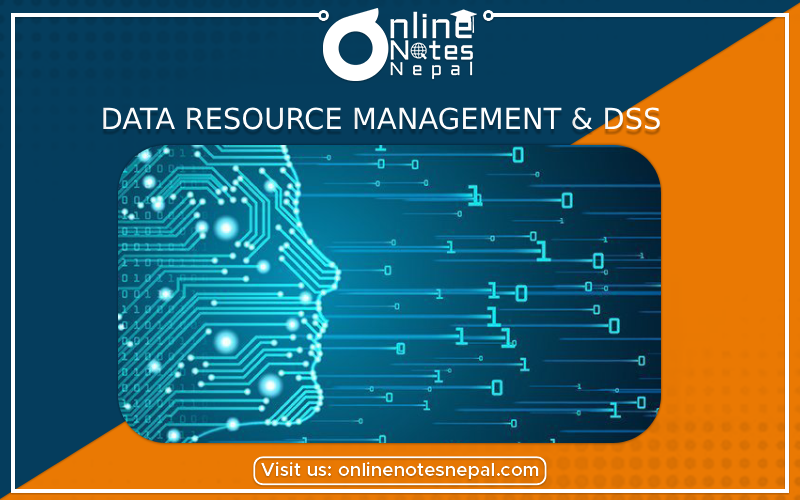Published by: Anu Poudeli
Published date: 18 Jul 2023

DRM (Data Resource Management) is the administration, management, and control of an organization's data resources. It includes the methods, rules, and technology needed to ensure data accuracy, consistency, accessibility, and security. DRM seeks to maximize the value and usability of data within an organization while also assisting decision-making processes. Decision Support Systems (DSS) are computer-based systems that provide pertinent information and analytical tools to aid in decision-making tasks.
Here's some information about Data Resource Management and Decision Support Systems:
Data Resource Management:
a. Data Resource Management Overview: This section gives an overview of DRM, its significance, and fundamental principles. Data governance, data quality management, data integration, and data security are among the subjects covered.
b. Data Resource Management Processes: This section describes the various DRM processes, such as data planning, data acquisition, data storage, data maintenance, and data archiving. It goes over the duties and obligations of data stewards and custodians.
c. Data Governance and Data Management: This section delves into the ideas of data governance and data management within the context of DRM. It addresses issues such as data policies, standards, documentation, and data lineage.
d. Data Quality Management: This section emphasizes the significance of data quality and offers strategies and procedures for managing and enhancing data quality. It addresses data profiling, cleansing, validation, and auditing.
e. Data Security and Privacy: This section addresses the difficulties and best practices for data security and privacy in DRM. It discusses data classification, access control, data encryption, and regulatory compliance (for example, GDPR and CCPA).
Decision Support Systems:
a. Decision Support Systems Overview: This section gives an overview of the DSS, its components, and its role in decision-making. It discusses decision models, data analysis, and decision support systems, among other things.
b. Decision Support System forms: This section looks at different forms of DSS, such as model-driven DSS, data-driven DSS, and knowledge-driven DSS. It describes their features, strengths, and weaknesses.
c. Decision Support System Components: The user interface, data management subsystem, model management subsystem, and knowledge management subsystem are all discussed in this section.
d. DSS Data Analysis Techniques: This section focuses on DSS data analysis techniques such as statistical analysis, data mining, and predictive modeling. It demonstrates how these strategies can help in decision-making.
e. Decision Support System Applications: This section examines the many applications of DSS in various industries and areas. It shows how DSS can be utilized in financial planning, inventory management, supply chain optimization, and marketing decision-making.
These topics should give you a good grounding in Data Resource Management and Decision Support Systems. Remember to delve further into each topic to obtain a thorough understanding of the subject.